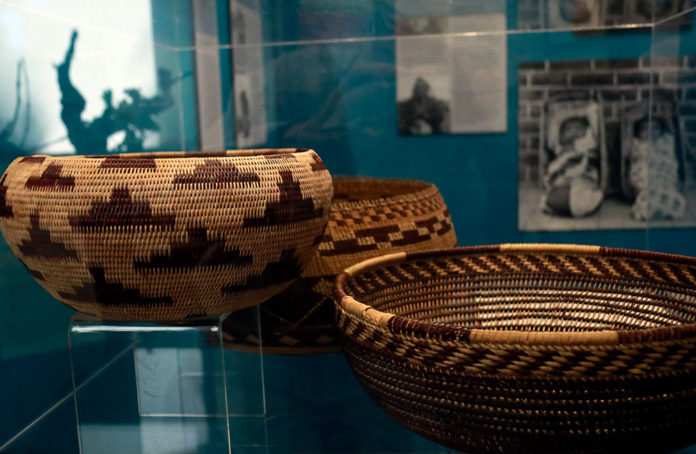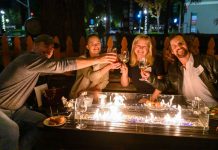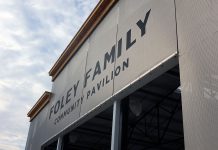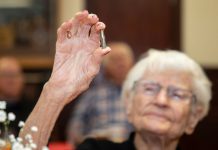Up the steep flight of stone steps to the Healdsburg Museum’s double-door entrance is a pathway to possibilities—the promise of old worlds made new. Starting last Saturday, that ascent leads to a magical gateway into Healdsburg itself, past and present, with a new multi-media show that brings history to life.
Appropriately, it starts with the Russian River. The recently installed projector system throws a montage onto a 19-foot-wide screen—videos of the river’s slow meander through cottonwoods, bay trees, Douglas firs and oaks. Herons fly across the river, and a splashing takes place in the shadows from an unknown creature. An otter? A salmon? A summer vacationer?
Much of the video is a boat’s-eye view of the Russian River, created by Hugh Livingston as part of the “Your River, Downtown” project he and Linus Lancaster have been working on for two years (and will continue to work on until it’s finished).
Meanwhile the all-embracing sound, from 12 speakers mounted on the walls surrounding the east wing of the former Carnegie Library, is Livingston’s own contribution. He’s a cellist, composer and “site-specific sound installation artist,” as he puts it.
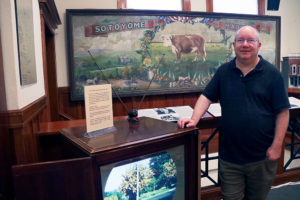
The presentation has been produced by Livingston to show what Healdsburg is; and the audio portion recreates the sounds of life not only on the river, but in the farms, lumber mills and winery barns that have contributed to the soundtrack of life in Healdsburg over time.
But that’s only one part of this multifaceted exhibition. Other components are conveyed through old posters, fruit-crate art, music programs, a Prune Packers uniform from the 1920s, and the chains and cuffs that collared a criminal’s ankles in the town’s first jail.
From concept to word count
The entire exhibit, called “Many Roads to Healdsburg,” was co-created by Museum Curator and Executive Director Holly Hoods and Noah Jeppson, an environmental artist and board member. It is the newest and latest exhibition at the museum, designed to be permanent yet dynamic, changing over time, introducing new elements into the viewer’s experience.
“It’s got to change, so it’s not ‘permanent,’” Hoods said. Instead, she prefers to think of it as a long-term exhibition. “I feel like ‘permanent’ is where exhibits go to die…
“We hope to leave it up for about five years. Tweaking it, being able to keep it fresh, add new stories, add different artifacts—so that anytime people come, they’ll be able to find a history of Healdsburg that continues to change.”
If that sounds ambitious, it is. It also sounds difficult to pull off. “I actually have been thinking about this for years,” since before Jeppson came along to join the project, Hoods said. “I give him so much credit—otherwise this would still be just rolling around in my head.”
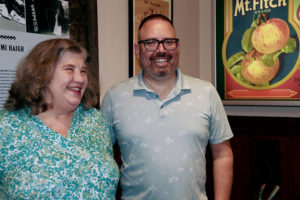
Jeppson, an “an experiential graphic designer” by his own description, has been involved with the museum since he came to Healdsburg in 2020, and asked Holly if she knew anything about the house he and his husband Corey Rawdon had purchased. Of course she did: The Gothic-style Victorian near the Plaza on North Street was built in 1884 by Henry Fried, a German immigrant who owned a bar and later became a fire chief and mayor. More recently it served as a boarding house and apartments.
Soon Jeppson was creating the changing columns of color lighting on the building’s exterior, and his design skills have since been called upon often. The “Many Roads to Healdsburg” show, however, taxed even his creative reservoir.
“We were looking at how do you tell all of Healdsburg history in a small space—because we’re only doing half of the gallery,” Jeppson said (the other half of the exhibit floor is currently occupied by the “Pomo Weavers Society” exhibition until Nov. 2). “So it took a lot of creative thinking of how we layer the stories in. And that’s where the video, the artifacts, the movable walls, those came into place. People can now go right up to the artifacts on the walls.”
Hoods’ ambitions proved both an inspiration and a problem. “We tried to come up with certain themes we knew we wanted to cover, but then he gave me a word count,” she said, laughing.
“Two hundred words, that’s what you get!” said Jeppson. The ideas were winnowed down into several key categories, and the two explored the museum’s deep lode of archives for ways to tell the stories.
Pillars of community
They enlisted Hammerfriar Gallery to frame some of the photos, posters and other material for display and preservation—the list of contributors to the exhibit is long, and can be found just inside the right side of the entrance.
In this first iteration of “Many Paths to Healdsburg,” four local figures are profiled, many of them familiar to residents: John Davis Hassett, who built the oldest houses still standing in town; and Laura Fish Somersal, the Pomo basket weaver, teacher and “culture bearer,” for whom a new 36-acre park on the north side of town was named.
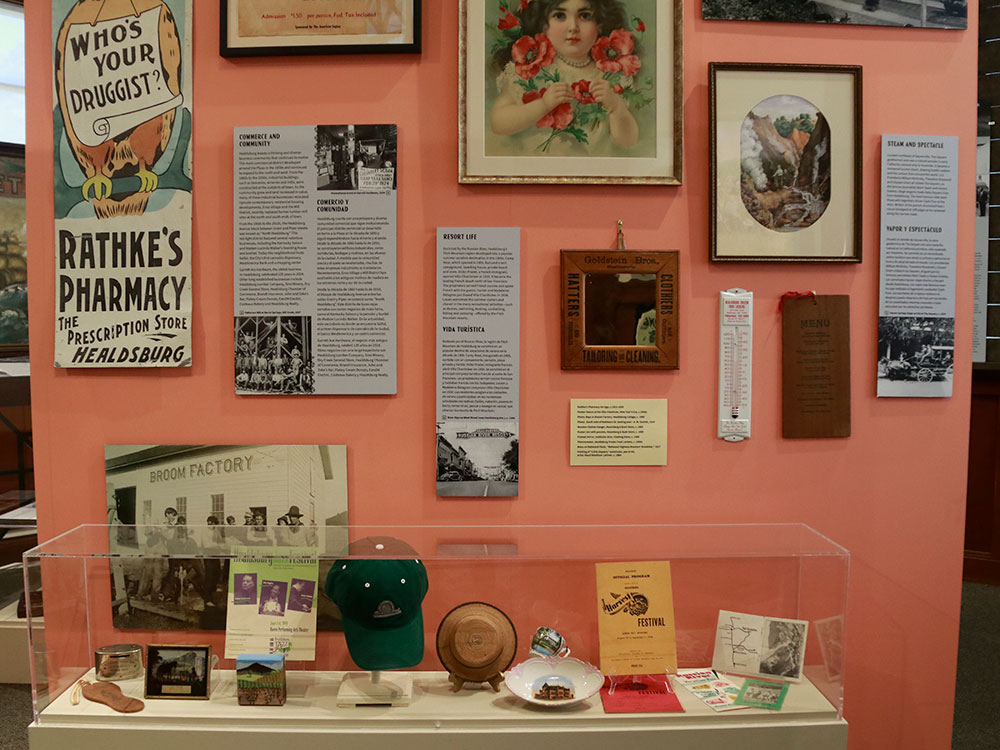
There’s also Isabelle Simi Haigh, the first woman in the state to own and run a winery, who lived until 1981 in a stately house on Front Street now known as the River Belle Inn; and Smith Robinson, one of the only Black men in Healdsburg history and an influential community leader.
“I really want people to know about Smith Robinson!” Hoods said. She’s not the first: The gymnasium at Healdsburg High is named for Robinson, but a visit to the museum can help anyone better understand the people who made Healdsburg what it is today.
These profiles, too, can be swapped out a couple of times a year, introducing new names and faces from the past whose influence on today’s Healdsburg is still unfolding or yet to be recognized.
A table of “touchable” items—a manual typewriter, a hotel bell—has become one of the exhibit’s most popular features in the short week since it opened. It seems visitors come to the museum not just to read about the past or see a video: They come to touch it.
The Healdsburg Museum is open Wednesdays through Sundays, 11am to 4pm, at 221 Matheson St.


